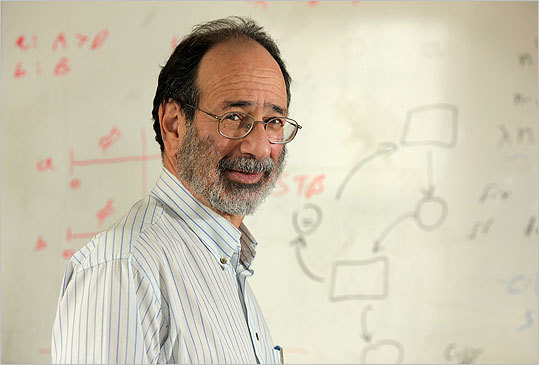"That's the title of a
NY Times Op-Ed by LAINIE FRIEDMAN ROSS and BENJAMIN E. HIPPEN, criticizing the recent UNOS
proposals to change the deceased donor kidney allocation system (about which I recently blogged
here and
here). (Ross and Hippen don't always agree with each other;
here they take opposite sides of the debate on whether it would be ok to compensate donors.)
In their op-ed they write:
"The proposal is supposed to provide deceased-donor kidneys of higher quality to healthier, younger patients instead of to elderly ones who presumably have fewer years to live.
"It sounds simple enough.
But the strategy could result in fewer kidneys going from living donors to young candidates, and could lead to more deaths of older or sicker candidates on the waiting list. Moreover, it would do nothing to address the fundamental problem: the persistent shortage of kidneys from donors, both living and deceased.
"The proposal would set up a two-pronged strategy that is intended to increase the number of life-years gained for every donor kidney. Under the proposal, the top 20 percent of kidneys from deceased donors who had been young and healthy would be assigned to the top 20 percent of young healthy candidates. In other words, the best deceased-donor kidneys would be given to patients likeliest to have long lives ahead of them.
"The other 80 percent of deceased-donor kidneys would be allocated first to local candidates within a 15-year age range of the donor, and if no potential candidate were identified, then to the broader pool of candidates. (For example, candidates aged 25 to 55 would get priority for a kidney from a 40-year-old donor who had just died.)
"But while the goal is understandable, the proposal is flawed...
"...giving healthy young patients first dibs on kidneys from young deceased donors might reduce donation rates from living donors to the young candidates, which is at cross-purposes with the goal of extending years of life after transplant.
In 2005, the network started giving pediatric transplant candidates priority for kidneys from deceased donors younger than 35. While the pediatric patients received more organs from deceased donors, they got fewer organs from living donors. The likely explanation is that the donors, including many parents, held off, figuring that they could donate later, when the deceased-donor kidney eventually failed. (Those kidneys can last up to 20 years.)
"The new proposal would effectively expand the 2005 rule to all healthier, younger candidates, potentially reducing living-donor transplantation to the very group that stands to benefit the most from it. This would only increase their need for another transplant later, since kidneys from deceased donors do not last as long as kidneys from living ones.
"Giving more organs to young recipients would also come at the expense of “older” recipients, which in this context can mean 50 to 64. (Only a tiny fraction of all kidneys go to recipients older than 70.) Since older candidates on the waiting list are less likely to live long enough to receive a kidney, making them less eligible for transplants will probably result in more deaths on the list, and more pressure on available living donors to donate to older candidates.
...
"
What should be done instead?
"
First, allocate kidneys on a broader basis. Under both the current and proposed systems, kidneys are allocated locally. But while a New Yorker with end-stage renal disease will typically wait at least six years for a transplant, her counterpart in Minnesota might wait just two to three. ...
"Second, the network should continue to support first-person consent legislation under which people who have properly declared their willingness to donate their organs in case of an unexpected death cannot have their wishes overruled by their bereaved families.
"
But for now, the only sure way to reduce the shortage of organs is to expand transplantation from living donors...
"
The network should also keep encouraging innovative efforts like “kidney swaps” or “donor chains.” Kidney swaps involve two donor-recipient pairs who are incompatible within the pair, but can donate to the other pair’s recipient. (Think of it as a square dance where the couples switch partners halfway through.)
Donor chains begin with a living donor willing to donate to anyone on the waiting list. Instead of simply giving that donor’s kidney to the next patient in line, the kidney can go to the would-be recipient in an incompatible donor-recipient pair; that donor, in turn, can then give to another recipient of an incompatible donor-recipient pair, with the chain continuing indefinitely. (Consider it the medical equivalent of “pay it forward.”)




